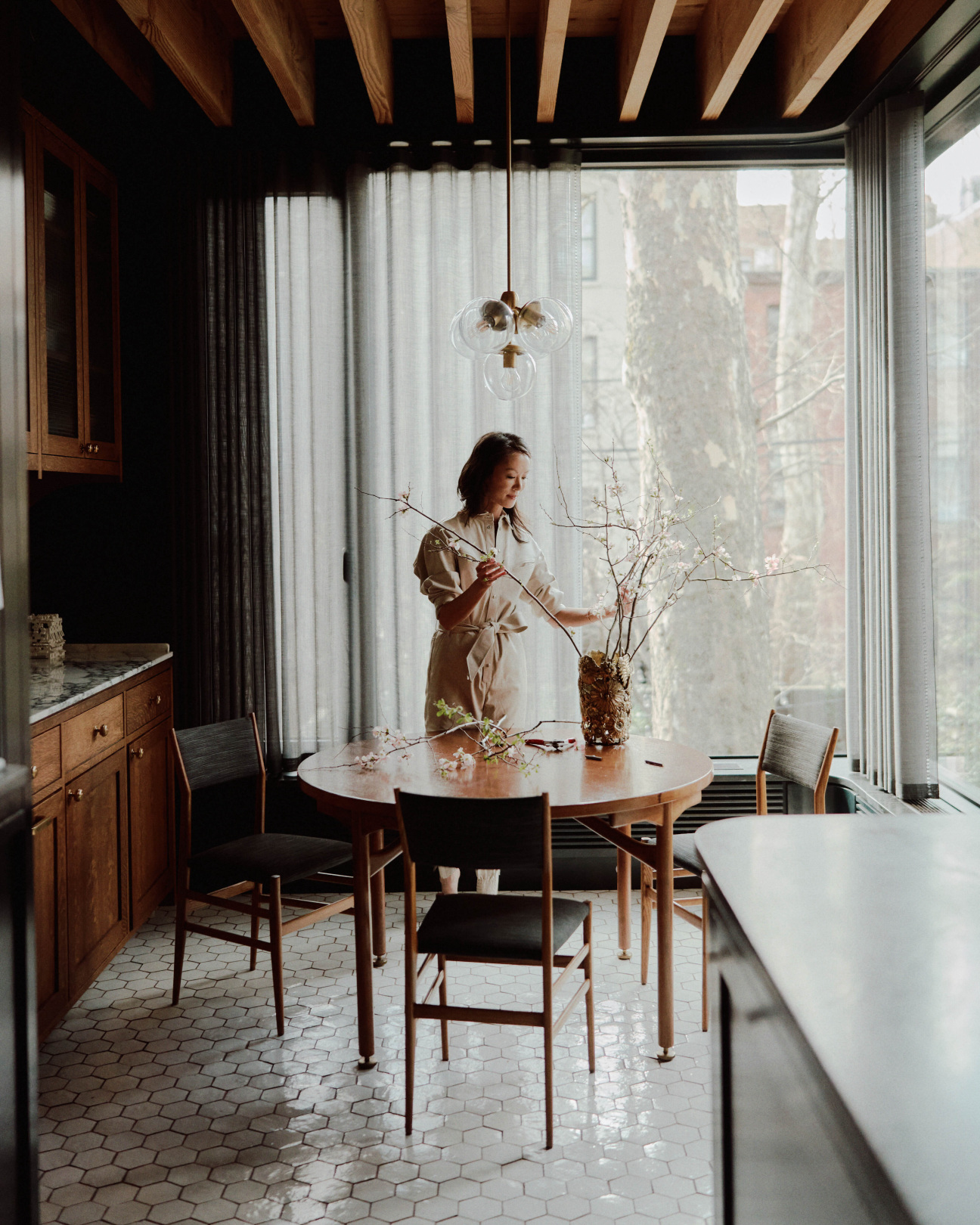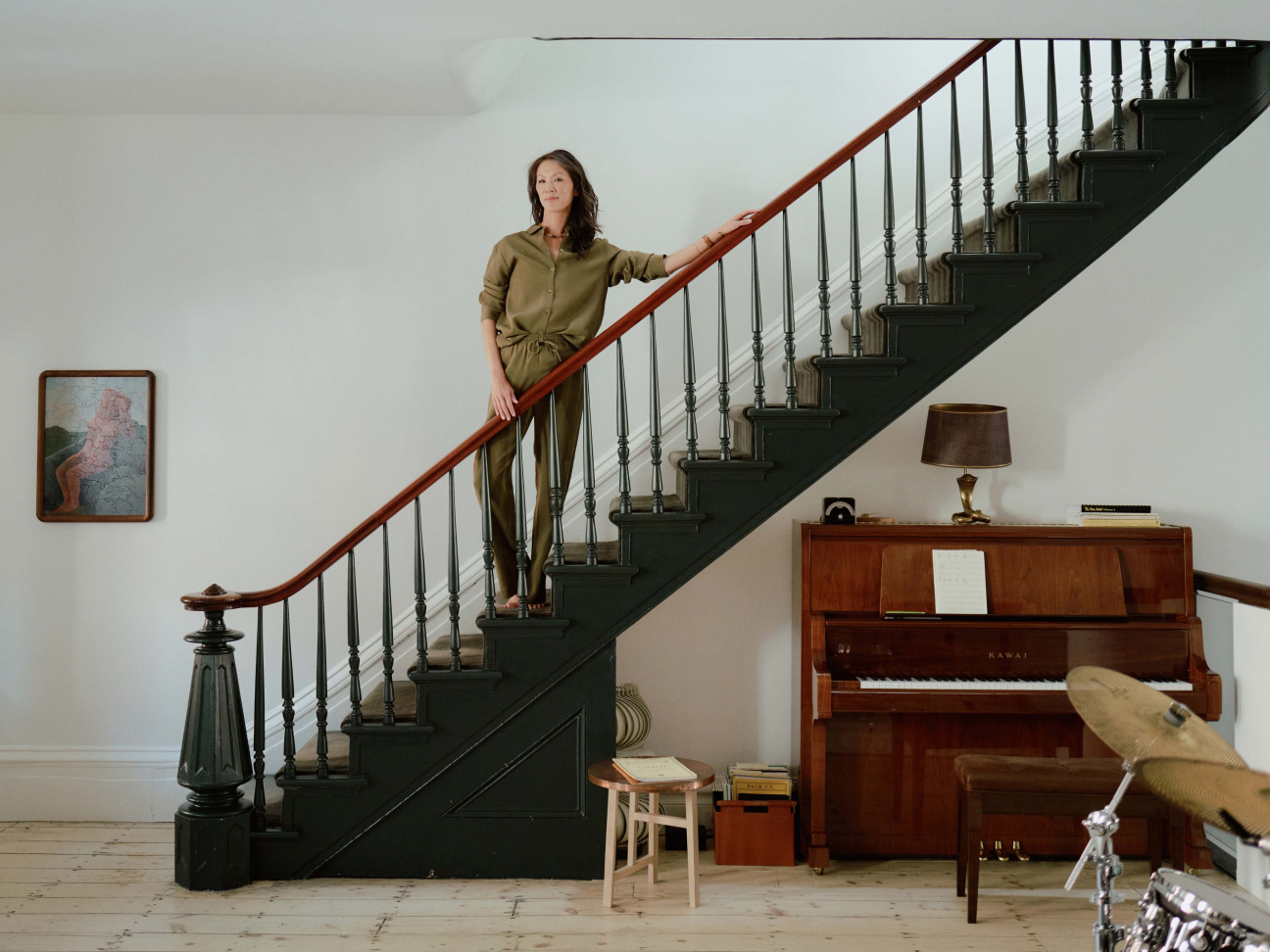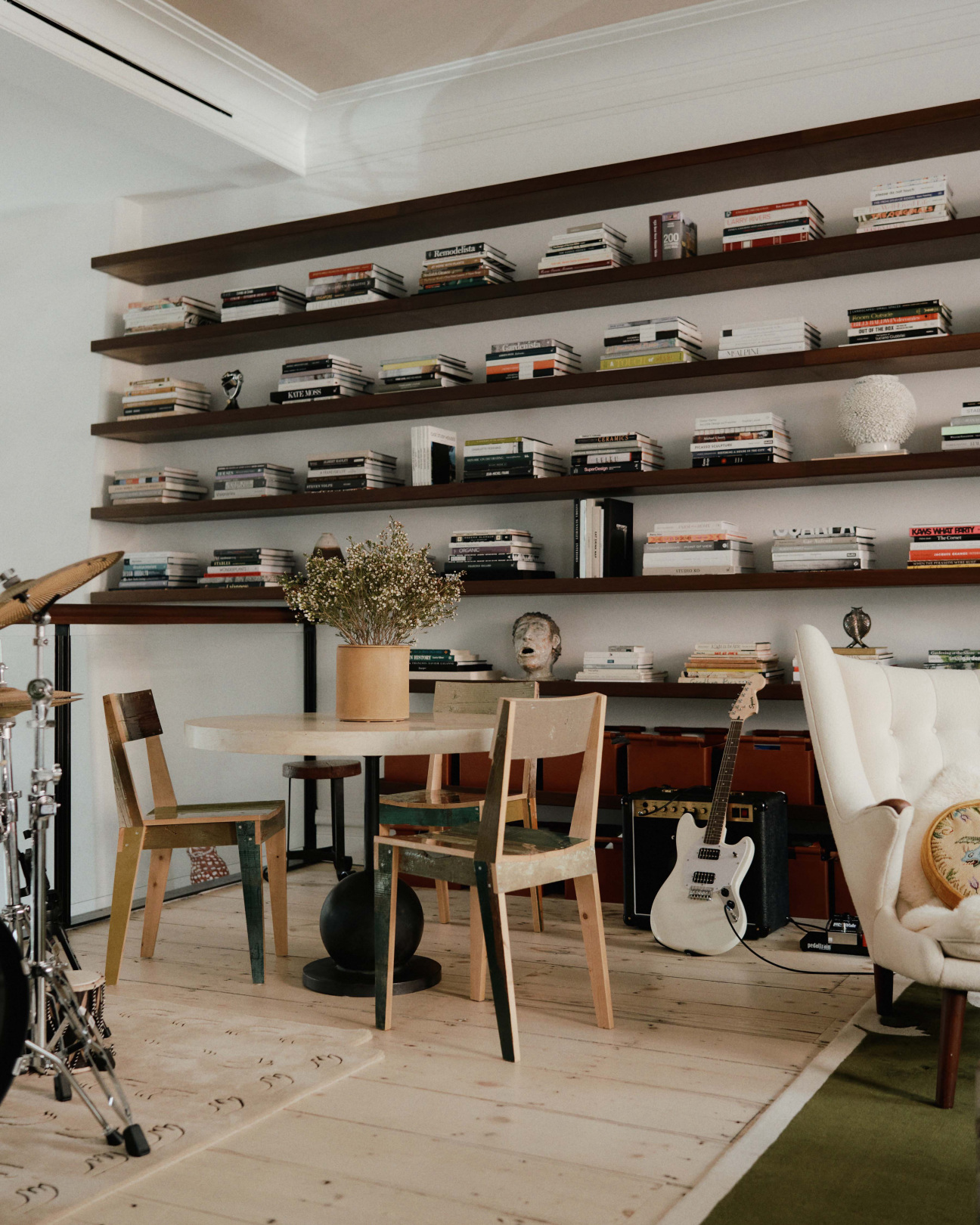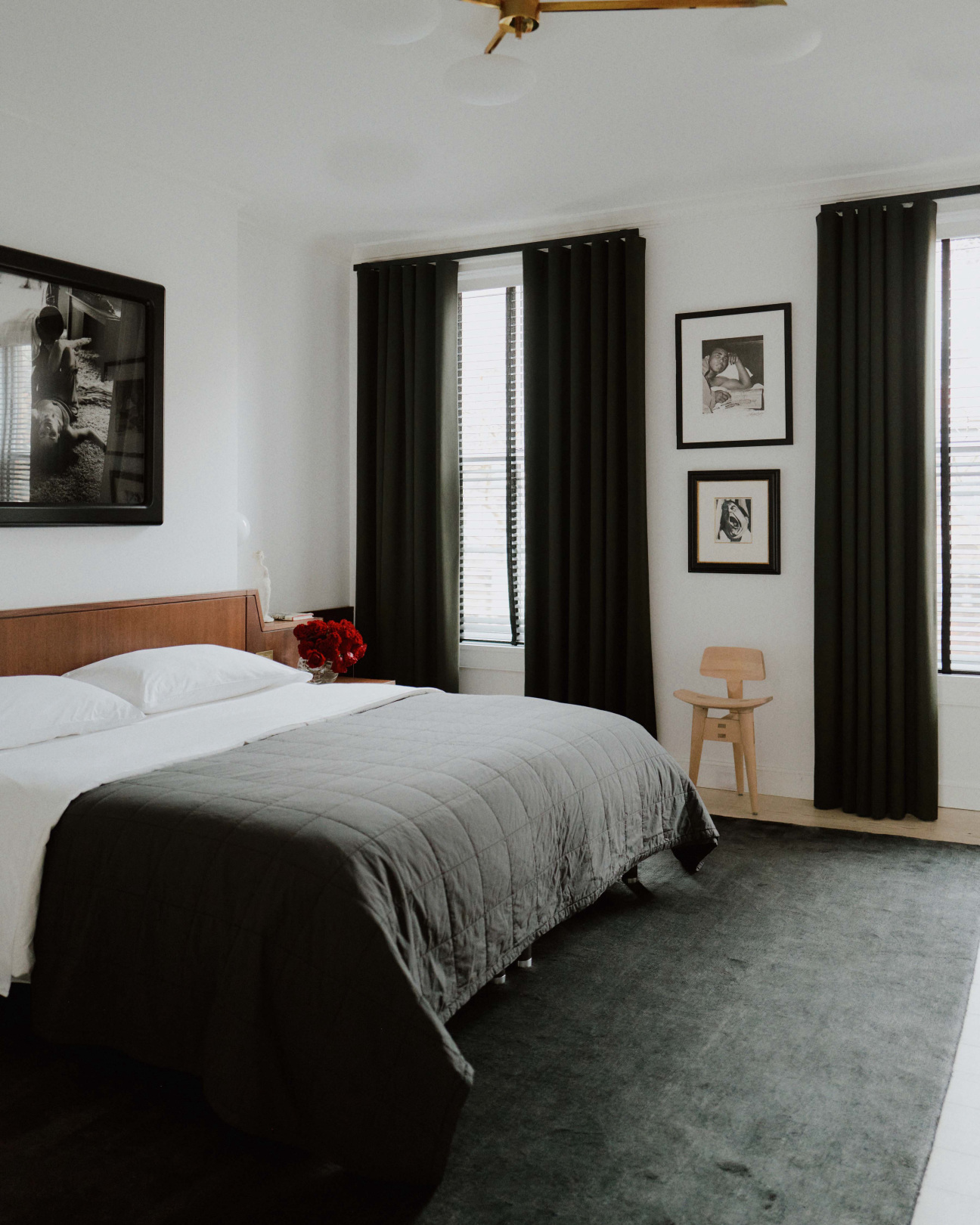
If we are defined by the company we keep, then Olivia Song is in great shape. The interior designer’s Brooklyn townhouse is composed almost entirely of, as she puts it, “things that come from friends.” There’s a Bec Brittain chandelier, a shape-shifting mirror by Ian Stell, an owl sculpture by ceramicist MyungJin Kim, and a Piet Hein Eek coffee table, its signature knife-edges dulled to rounded corners. “We can have bruising in the house,” she explains, “but no bleeding.”
Given this colorful domestic backdrop, it’s no surprise that Song was unperturbed when she came home one afternoon to find that her young son, a budding musician, had set up a drum set in the middle of the living room. “I wasn’t really against it,” she says, her hands miming the enormity of the apparatus. “It’s kind of an obnoxious roommate thing to do, but I love my children more than anything, so we lived with it there for at least a year.” Preempting the obvious next question, Song, a classically trained pianist herself, adds, “We’re pretty considerate of the neighbors—no drumming past 9:30 p.m.”

One of said neighbors is also an avid pianist: “I hear him practice at 7 in the morning, and I love it. It’s very bohemian Brooklyn.” Song and her financier husband, Scott Rofey, purchased their Brooklyn sanctuary in 2014 and promptly set about gut-renovating the property. “What drew me to townhouse living versus apartment living is that everyone could spread out,” says Song. “We could all have our own haven.” She worked with the architecture firm Leroy Street Studio, which she praises for its “cerebral and intelligent way of thinking about space”—one that dovetailed with her own modernist tastes.
Song’s vision of openness is striking throughout. Take, for example, the cantilevered kitchen, which juts out into the backyard and into the foliage of a cluster of old plane trees, likely planted when the original home was built in 1840. Or the central family room, a soaring space spanning two floors. “The way we laid it out, you can feel the full width and length of the townhouse,” she observes. “That is really special.” The footbridge that traverses the upper floor required especially careful planning, given Rofey’s fear of heights.

For Song, the process of designing it called to mind the experience of famed Yale architecture chair Paul Rudolph, whose iconic 1980s penthouse (complete with transparent floors) triggered extreme vertigo in its visitors. “One of Paul’s guests said in an interview that he didn’t know one moment of relaxation,” Song says with a laugh. Ultimately, she opted for solid plaster railings over glass.
Song brings a similar dynamism to all the projects in her design practice, ranging from unique residential interiors to C-suite headquarters. When we meet, she’s still basking in the thrill of having landed her “dream job”—working with equestrians Brianne Goutal-Marteau and Romain Marteau to redesign their horse-training facilities. “They’re industry visionaries,” gushes the designer, whose son is a competitive show jumper. “Brianne is a World Cup rider and Romain is a former rider and a real estate developer. The two of them have assembled an incredible portfolio of properties.”

That portfolio includes a historic stable in New Jersey which they recently rescued from demolition, and their flagship in Wellington, Florida, widely considered the riding capital of the world. Song is tasked with bringing a contemporary design sensibility to the project, while also tapping into her extensive experience in operational design. “For the Wellington farm, we are working to reduce the number of steps that the grooms have to take in routine tasks. That kind of time-saving is highly prized,” she says.
Since moving to Brooklyn, Song has also lent her talents to the Brooklyn Museum—first on its board of advisors and currently as co-chair of the Contemporary Arts Acquisitions Committee, which focuses on emerging artists. She was instrumental in the institution’s support of rising star Oscar yi Hou. “My husband and I acquired a work from his first solo show at James Fuentes gallery and donated it to the museum. He does these really interesting explorative portraits of himself and his friends,” she says.
A solo show at the museum soon followed, from which the committee acquired another work. “We’re delivering on the museum’s mission to represent the diversity of ideas, culture, and people in Brooklyn. It’s very much based in social advocacy and the local community. I’m a big champion of paying it forward.”










 in your life?
in your life?

